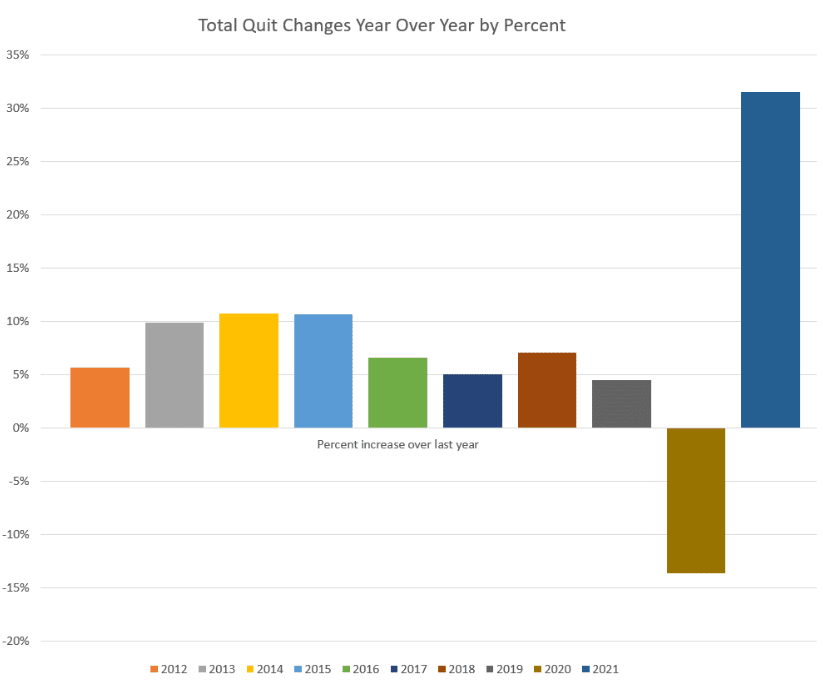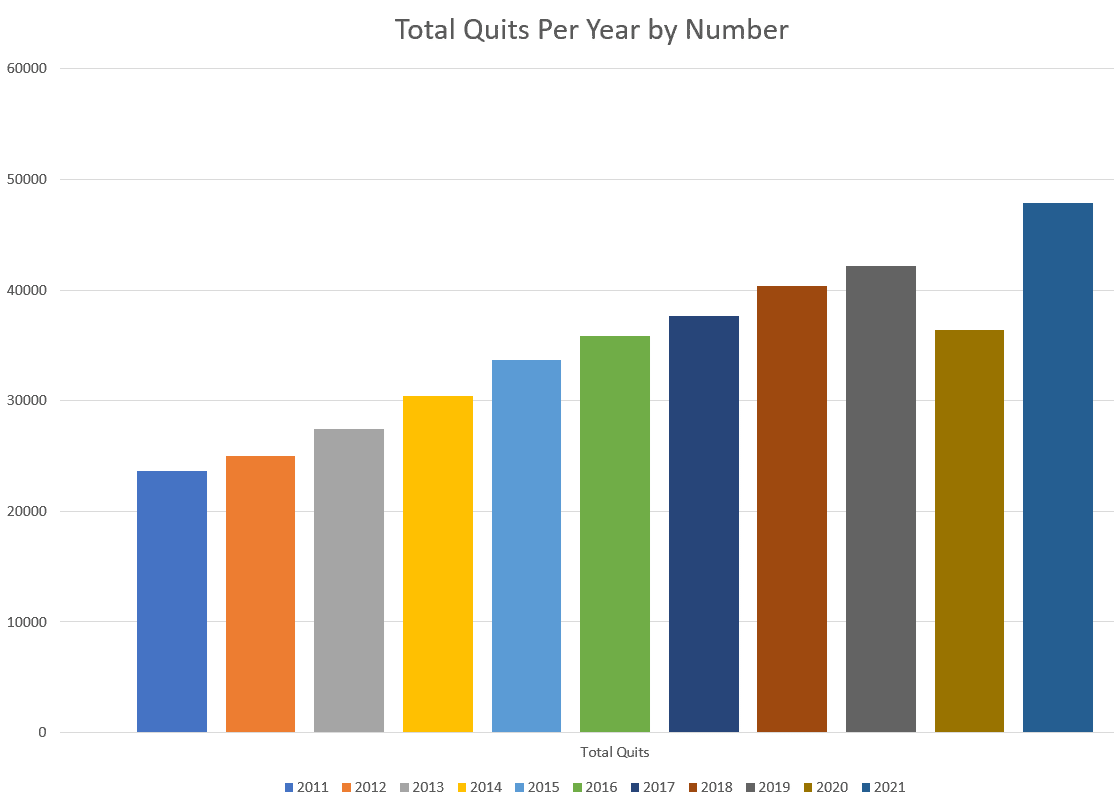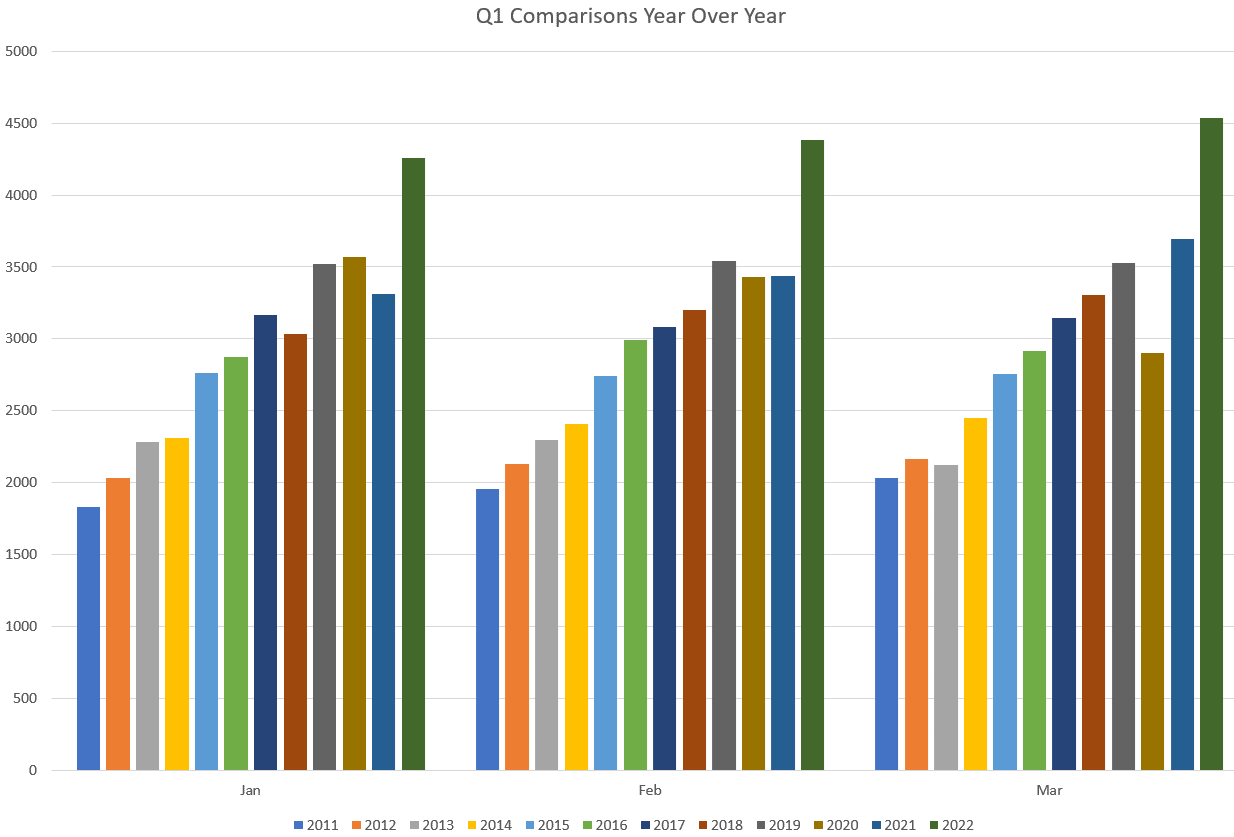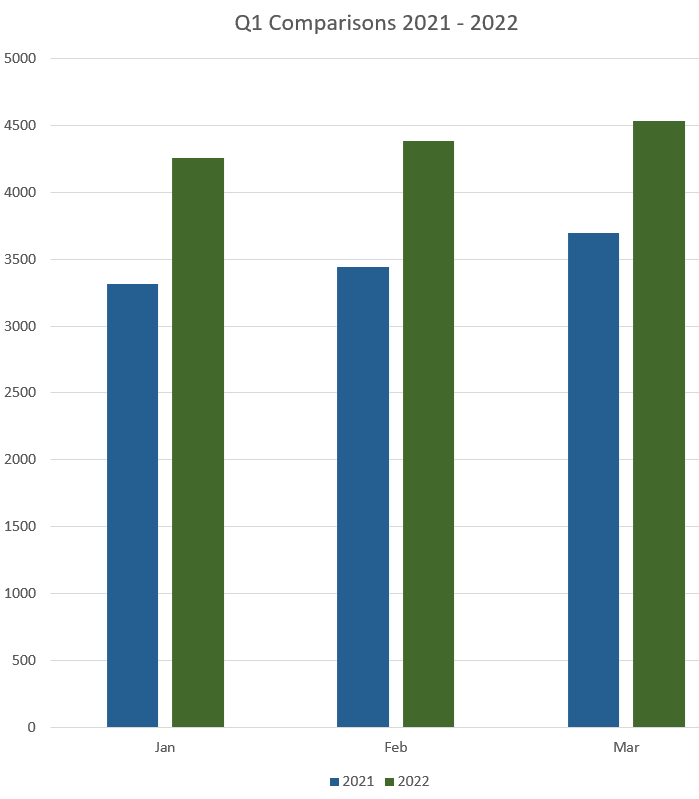The Great Resignation is Not a Blip

The Great Resignation. The Great Reshuffle. The Big Quit. So many names for this phenomenon that seemed to appear out of the pandemic.
Except it didn’t.
It got attention because of the dip in 2020, which created what looked like crazy numbers in 2021, when the number of people who quit their jobs increased 31% in 2021 compared to 2020. (All stats are from the US Bureau of Labor Statistics.)
The 2020 numbers, though? Nearly 14% lower than the 4.5% increase we saw in 2019. So even a modest increase would look huge next to that, right?

The truth? These numbers have been trending upward for well over a decade. The percentage year-over-year fluctuates with political and socioeconomic shifts—and global pandemics—but ignoring 2020 and looking at just the numbers from year to year shows that the trend is there and it’s not going away.

The rapid increase in the ability to work remotely seems poised to accelerate the trend, with preliminary numbers for Q1 of 2022 showing a more than 26% increase over Q1 of 2021. In fact, 2022 is the first year that any of the months in Q1 have had more than 4,000 quits—not only that, but all three of them have been more than 4,000.


This is a very real trend, and one that has been accelerated by the pandemic and post-pandemic shifts in work life. It’s not going away anytime soon—if at all.
So how does this affect me?
Associations are in a unique situation, where when job shifts like this occur, they take a double hit. Not only do you have to deal with staffing headaches and the lack of continuity that can bring; you also have to deal with members changing jobs and exiting your industry at a more accelerated rate.
|
Staffing Issues |
Membership Issues |
|
· Employees quit · Continuity is lost · Competition for staffing is higher |
· Members leave their jobs · Database hygiene is difficult · Finding new members is a challenge |
Associations need to get out of their comfort zones now more than other. Sticking to the status quo is not going to get the same steady results as before. You need new membership ideas, new value adds, and to possibly rethink your business model a bit.
|
Status Quo Risks |
Benefits of Updating |
|
· Members may not renew · Prospects may not join · Fewer members = fewer voices · Fewer invested people to market to · Revenue may go down |
· More prospects likely to join · More voices = advocacy potential · Larger invested marketing database · Non-dues revenue may go up |
That’s Great, But Prospects Aren’t Biting
Worried that your prospective members aren’t biting on your emails now, so a change may not matter? Let’s look at some of the reasons that might happen.
|
Your Message isn’t Reaching Them |
Your message isn’t resonating |
|
· You have deliverability issues · You’re not thinking multi-channel · Not consistent · Not the right message at the right time |
· You don’t know them · You’re not segmenting properly · You’re not targeting properly · It’s not personal to them |
Updating your business model and benefits—see the top 8 must have benefits for 2022—might hit at the most important one –the right message at the right time. If your new offerings resonate and you communicate them effectively, prospects will bite.
Things to watch
Want to keep your members? Want them to become your biggest cheerleaders and bring their friends? Here’s what you need to do:
- Know what your members want.
- Provide a personal member experience for each member. Not personalized, personal.
- Communicate effectively with the right message at the right time.
- Make your members see value every day.
- Meet them where they are. Provide multiple ways to get access to the information they need.
And then?
Set it up, then review and revise.
- Review your email data
- Test your theories
- Do focus groups
- Analyze web traffic
- Do a survey
- Revise accordingly
Once you know where the information is in your systems and you start tracking it, and get the best integrations set up for you—the same integrations do not work for everyone – one size does not fit all— you can start setting up automations to help. (Definite side benefit? Those automations will provide much needed continuity as your staff experiences turnover.)
And that’s it. It’s easy—and as difficult—as that.
–
Want to learn more on these trends and how to combat them?? Join my session at the 2022 Forum Forward Conference on June 21!
Tags
Related Articles
The Emergency Nurses Association Utilizes Design Thinking to Reimagine its Awards Ceremony
In a prime example of intrapreneurship, the ENA utilized design thinking to innovate within the...
Report Reveals Strategies to Overcome Membership Decline
McKinley Advisors’ Membership Reset report provides a roadmap that association leaders can use to refocus...
Member Retention: More Than Just a Number
Learn how the AANA used humor and multichannel marketing to win back lapsed members.




